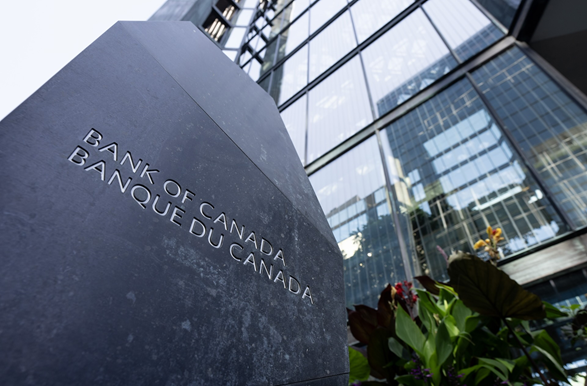by Jude Ayua
A recent Bank of Canada (BOC) research disclosed Canadian consumers showed skepticism toward the broad early adoption of the BOC’s potential central bank digital currency (CBDC).
While the BOC is still considering developing a CBDC, it researched using a hypothetical Digital Canadian Dollar with a focus on public policy, financial technology innovations, and public opinion. The Bank explored “the consumer value proposition of a hypothetical Digital Canadian Dollar, considerations for its adoption and the users who would benefit most from this potential new payment method.”
Generally, the BOC found that while many participants would support the introduction of a Digital Canadian Dollar, widespread early adoption is unlikely since existing payment methods already satisfy most users’ needs. Financially vulnerable groups, who could benefit the most, show notable resistance to adoption. Key factors for potential appeal include universal merchant acceptance, low costs, easy access, simplified online payments, shared payment options, budgeting tools, and customizable security and privacy features, which are prioritized over offline and anonymous payment functions. Additionally, cash remains valued, and some groups may oppose the Digital Dollar if they fear it signals the end of cash issuance. To foster understanding and acceptance, the BOC emphasizes the need for an informational campaign.
Read also: President Trump bans US-issued CBDCs.
Findings based on user segments
The BOC made specific findings about the potential adoption of a hypothetical Digital Canadian Dollar among different user segments:
- Broad Mainstreamers: Expressed satisfaction with current payment methods and would only adopt the Digital Dollar if it is universally accepted and endorsed by trusted sources.
- Teens, Tweens, and Families: Likely early adopters due to enthusiasm for a free-to-use Digital Dollar with money management features and shared payment options.
- Open-Minded Strivers: Interested in specific use cases but require universal acceptance before adopting.
- Laid-Back Progressives: Potential early adopters who value ease of use, convenience, and reliable money-management tools.
- Excluded Strugglers: Have the most to gain but are initially resistant due to low trust and privacy concerns. Their interest grows with better understanding and targeted support.
- Cautious Traditionalists: Skeptical of the Digital Dollar’s benefits and reliability, with concerns about privacy and government surveillance.
- Agile Gurus: Curious but do not see significant benefits for daily use, prioritizing rewards and incentives over adopting the Digital Dollar.
Read also: 134 Countries Exploring CBDCs: 8 Major Findings You Should Know
Findings based on themes
The BOC also made findings based on the following themes: adoption factors, universal access, privacy, trust, and information campaign. Specifically:
- Interest and Adoption: There is interest in a Digital Canadian Dollar, but most people feel current payment methods are sufficient. It is seen more as a backup option.
- Early Adopters: Teens, tweens, students, young adults, and financially vulnerable groups are most likely to adopt early, especially if the Digital Dollar is free and offers features like shared payments and budgeting tools.
- Challenges: Financially vulnerable groups, despite potential benefits, are initially resistant due to low trust and privacy concerns.
- Adoption Factors: Universal merchant acceptance, low costs, easy access, and customizable security and privacy settings are crucial for adoption.
- Trust and Privacy: Trust in the central bank is generally high, but there are concerns about government overreach and data privacy.
- Information Campaign: A targeted information campaign is essential to educate and build trust among potential users, especially those who are initially resistant.
From these findings, there is general support for a Digital Canadian Dollar. However, broad early adoption will require addressing trust, privacy, and usability concerns.
Read also: Bank of England confident about CBDC despite commercial banks’ reluctance
Canada’s cryptocurrency user base
Data from Statista shows Canada’s current crypto user base is 13.30 million and is projected to reach approximately 13.36 million users by 2025. The user rate, 34.01 percent, representing the percentage of the population using cryptocurrencies, is projected to increase to 33.89 percent by 2025. The analysis suggests “Canada is becoming a hub for cryptocurrency mining due to its abundant renewable energy sources and favorable regulatory environment.”
Canada’s high crypto user base and rate are prospects for the BOC to scale the Digital Canadian Dollar when launched, while working to address the concerns it identified in its research. With more users embracing digital currencies, the Digital Dollar is more likely to be adopted.
In addition to researching a potential Digital Canadian Dollar, Atlantic Council’s CBDC tracker shows that the BOC is testing cross-border wholesale CBDCs including the launch of Project Jasper with the Bank of England and the Monetary Authority of Singapore in 2017, and participating in the Bank for International Settlements’s group of 7.
Read also: Central Bank Digital Currencies CBDCs Introduction to Central Bank Digital Currencies (CBDCs)
Jude Ayua is a policy analyst at CAB. A lawyer, Jude is an associate at Infusion Lawyers where he is a member of the Blockchain & Virtual Assets Group. He is also a member of the Policy & Regulations Committee of the Stakeholders in Blockchain Technology Association of Nigeria (SiBAN). Jude reports and writes on crypto policy and regulations. jude@infusionlawyers.com
Discover more from Crypto Asset Buyer
Subscribe to get the latest posts sent to your email.



